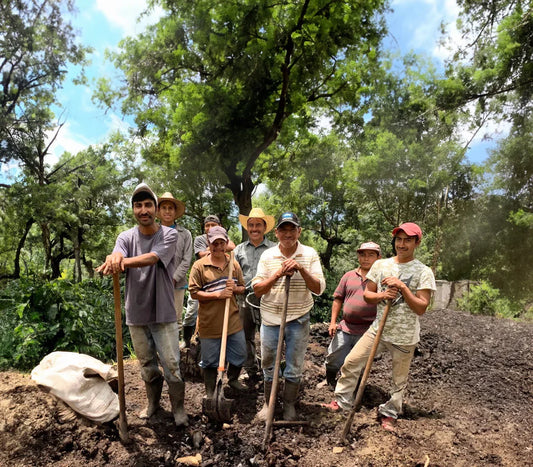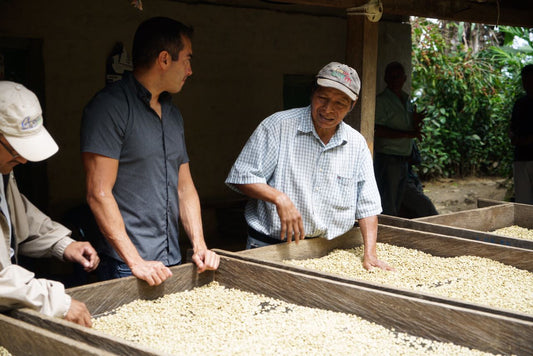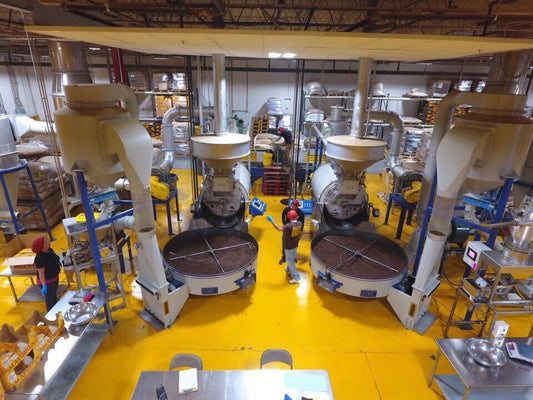
Cafecito: The Cuban Coffee You Need to Try
Strong, dark and handsome, the cafecito has lots in common with a telenovela lover… although your chances of finding a good cafecito on short notice are probably better.
What Is a Cafecito?
Characterized by its sweet, intense flavor, a traditional cafecito (also called Cuban coffee, Cuban espresso, Cuban pull or café cubano) is a strong espresso-style coffee which originated in Cuba.
Today, it is enjoyed around the world, from Paris to Miami, where it plays an important social and cultural role within Hispanic communities.
But what makes cafecito so special?
Some say it's the intensity of the dark-roasted coffee beans; others say it's the addition of the sugar early on in the process.
After all, the secret to a cafecito’s unique taste is in the demerara sugar added to the first few drops of coffee during the brewing process (rather than afterwards, as is the case with Western coffees) to make a sweet espumita.
The Social Side of Cafecito
But it is not only how it is prepared that makes a cafecito unique. It is also the social aspect that comes along with it.
An integral part of Cuban culture, it enjoys a special status as a leisurely drink and is enjoyed several times a day. First, at breakfast with pan tostado, then again at lunch and dinner. “No Cuban meal is complete without a cafecito, or Cuban coffee,” confirms Lourdes.
Of course, it is also consumed in copious amounts in between sittings, when entertaining guests (it is a traditional offering when entering Cuban homes) or socializing with family and friends.
Even the way cafecito is served is social! Popularly, it's served in a colada (a large coffee container or cup) with small cups that are just perfect for sharing.
Widely popular in Cuba, as well as other Latin American countries, there are several cafecito variations, apart from the colada, including the cortadito (half milk and half Cuban coffee) and the café con leche (imagine a Cuban version of the latte).
And just like there are variations of cafecito all over Latin America, each country also has a preferred pastry for enjoying with coffee.

Pastries to Accompany Your Cafecito
Guava Pastelitos, Cuba
Cubans enjoy their traditional coffees alongside sweet-and-salty guava pastelitos.
Consisting of crunchy puff pastry filled with guava paste and cheese, in Cuba, this pastry is enjoyed with a cafecito at any time of the day.
As Adrian Cane, director of operations at Colada Shop, a Cuban eatery in Washington DC notes: “We see two general trends. Those who are familiar with Cuban coffee culture frequently get buttered Cuban toast or guava pastelitos as an accompaniment. It’s definitely our best-selling pastry.”
Pan de Elote, Mexico
In Mexico, coffee is enjoyed with the well-known churro or pan de elote – a sweet biscuit made with raw, fresh corn.
There are several variations to the traditional recipe, some add cinnamon to it, some don’t, but what they all have in common is that the final product is dense yet deliciously moist.
The texture of the biscuit along with the sweetness of the corn pairs wonderfully with their coffee, which they usually drink with milk.
A pairing that is enjoyed locally too according to Patricia Cabrera and her husband Andres Webster, the owners of Goki Café, a Mexican café in Arcadia, California.
“Our pastries are based on Mexican culture and ingredients, such as corn, chocolate and vanilla among other ingredients,” they explain. “All of our pastries are homemade and we have customers that like to order different ones but we could say that the most popular ones are the pan de elote and the churro cheesecake.”
Medialuna, Argentina
In Argentina, the most popular breakfast and afternoon snack consist of coffee and a medialuna; although the coffee differs in preparation from the cafecito.
Here, the most traditional coffee you’ll find is the café con leche, which consists of strong coffee mixed with milk in approximately equal parts. Still, most Argentines refer to this as a cafecito when speaking to each other.
While medialunas may look similar to croissants, they are quite different in taste. Medialunas are smaller, more compact and sweeter.
You’ll rarely encounter a café in Argentina that doesn’t serve medialunas and most Argentinians enjoy these daily. It’s the mix of the sweet dough of the medialuna with the coffee that makes the perfect combination (some even like to dip it in their coffee much like the French dip their croissants).
So, what do you say? ¿Nos tomamos un cafecito?


